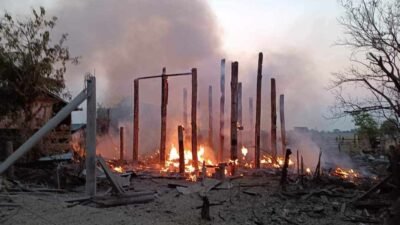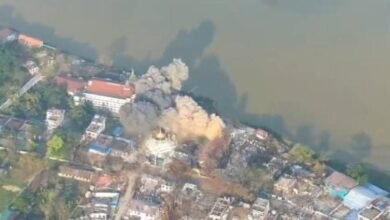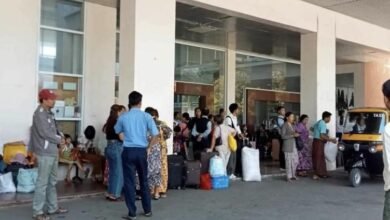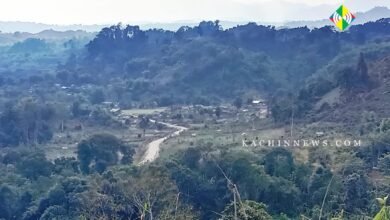Thousands Of Civilians Still Displaced In Shwegu Township

Over four months ago, soldiers razed almost 1,000 homes in eastern Shwegu in less than two weeks, as the regime placed the civilian population in its crosshairs during its offensive against the People’s Defense Forces (PDFs), who are fighting against the dictatorship in the township in Kachin State.
“They were aware of the presence of PDF troops in the area and that’s why they have been patrolling here. After intense fighting broke out with us, they attempted to control the area, using both ground troops and the air force to attack,” an officer from the Shwegu PDF told KNG while requesting anonymity. He said the military columns were sent from central Burma.
After suffering many casualties during battle, including the death of a deputy battalion commander near Nget Tan Tar on 23 March, the officer said they increased the use of airstrikes. The regime conducted three separate air attacks on civilian villages in eastern Shwegu Township between 24 March and 5 April. At the same time, columns from Light Infantry Division 88 went around the township burning homes.
The clashes lasted from 23 March to 11 April, during which 211 houses were burnt in Si Thaung, 129 in Mang Weing, 100 in Si Tha, 47 in Mang Ner, 41 in Tonkok, 35 in Mang Hker, 111 in Si Maw, 27 in Hein Kawng, 28 in Si Mu Gyi, 60 in Si Mu Lay, 130 in Namlan, and 37 in Nawng Latt Gyi.
Strategic Location
The Irrawaddy River passes through Shwegu Township, allowing the regime to send troops and weapons by boat to Kachin State from central Burma. Additionally, the rugged mountains separating the borders of Kachin and Shan states offer hiding spots for resistance groups, making the area of significant interest to the military.
A local man, who requested anonymity out of fear for his security, said, “This is a triangular area between Kachin and Shan states and Sagaing Region…crucial for both the Burma army and resistance groups. Shwegu Township is near a narrow passage of the Irrawaddy River, where resistance groups have historically attacked military boats.”
Resistance groups have long been attacking the junta’s flotillas transporting weapons and ammunition on the river at places like Katha, Myo Hla, and Shwegu for its soldiers in Kachin State, he said. According to his analysis, these attacks, a drone attack on the Myoma Police Station in Shwegu town using drones, and warning government staff to resign from their positions in the township have contributed to the regime’s decision to launch a major offensive in the area.
Regime Targeting Civilians
An anonymous local woman said, “they accuse the villages of supporting the PDF, and then they burn people’s houses.”
The PDF officer said after attacks on the military, the regime often retaliates by attacking civilians. “Generally, we used to attack Burma army columns before they arrived in the village, but the problem is that they attack villages if they suffer many casualties during the clash. Therefore, we avoid it unless it’s strategically important for us.”
The regime’s air and ground forces targeted 12 villages in the township. Soldiers have burnt homes, tractors, rice stores, mills, and other buildings. Thousands of people remain displaced, with many taking refuge in the jungle, where they are at risk of contracting dengue and malaria during the wet season. The displaced population is facing severe shortages of food, medicine, and vitamins, placing vulnerable groups like the elderly, children, and pregnant women in dire need of essential care.
More than four months have elapsed since these attacks, yet, the local people find themselves unable to return to their villages and rebuild their homes, exacerbating an ongoing humanitarian crisis. In the long term, analysts say it will be crucial to closely monitor and address the situation in eastern Shwegu Township to provide the much-needed aid and assistance to those affected by the conflict.
Recently, junta soldiers burnt homes in Bo Kon and Htin Kar, located in the southeast of the township on 5 July.




